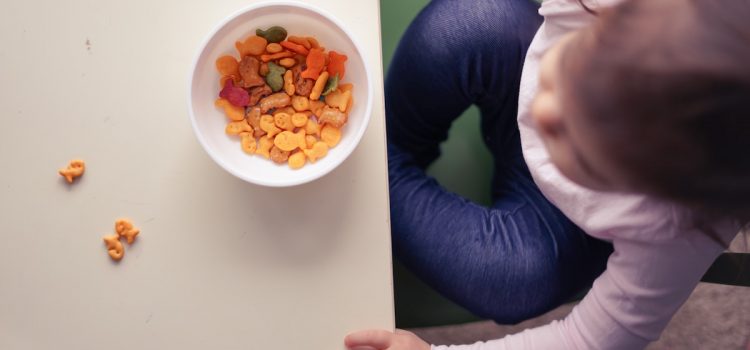

This article is an excerpt from the Shortform book guide to "Good Inside" by Becky Kennedy. Shortform has the world's best summaries and analyses of books you should be reading.
Like this article? Sign up for a free trial here.
Have you ever said, “My child won’t eat”? Is the dinner table a battlefield in your house?
Bodily autonomy enables a child to say “no” when they don’t feel comfortable with something. That can be incredibly important when a threat is real. It also can be incredibly frustrating if they’re exercising bodily autonomy when they don’t want to eat Brussels sprouts.
Keep reading to learn how to deal with a child who doesn’t want to eat and how to encourage bodily autonomy in the right ways at the right times.
Bodily Autonomy at Mealtimes
One of the instances in which bodily autonomy plays out is during mealtime struggles. Perhaps you’re one of those parents who has said, “My child won’t eat.” Kennedy explains that, as a parent, you feel responsible for nourishing your child, and you might see her refusal of Brussels sprouts as your failure to live up to that responsibility. But, your child is learning to exercise control over her body, and she sees your insistence on eating that vegetable as a threat to her bodily independence.
Kennedy suggests that you explain to your child the limits and options she has during mealtimes, according to her role. Your job as a parent is to decide what food is available to your child and when and where she can have it. Your child’s job is to decide whether she’s going to eat it and how much of it she’s going to have.
(Shortform note: Respecting your child’s bodily autonomy will help her become a competent eater. When children feel in control of what they eat, they’re more likely to interact with the food you offer in a relaxed, open-minded way, and they’ll feel calmer, which will help make the sensory experience of the meal more pleasant and something they can look forward to. As a parent, being in control of what foods are available and when and where she has access to them can help you feel confident in letting your child have autonomy over what she decides to eat.)
Encouraging Bodily Autonomy
According to Kennedy, bodily autonomy lets a child say “no” when they’re not comfortable, even if the boundary makes others upset. It’s the result of a child trusting her internal cues and feeling confident in enforcing boundaries because she knows they matter. To foster your child’s developing bodily autonomy, Kennedy recommends using the tools of validation and confidence-building.
Assume that your child’s experience is true. When your child expresses discomfort, hesitation, or some other negative feeling, Kennedy urges you to believe her. Don’t tell her she’s exaggerating or being silly. Remind her that only she can determine what feels good or bad in her body. Describe what she’s feeling to help her learn how to explain it herself later on. When you’re not sure what she’s feeling or what’s triggering her discomfort, Kennedy suggests you simply say there’s something in the situation that feels bad to her.
| More Tips for Fostering Bodily Autonomy Fostering your child’s bodily autonomy can ensure that they ask for help if they’re ever a victim of abuse or sexual assault. Other experts add that you can encourage your child’s bodily autonomy by: • Teaching them the proper names of body parts. This ensures that if anyone touches them inappropriately, your child will be able to clearly say where they were touched and get help. • Teaching them that it’s never their fault if someone does something to their body that they don’t like and that they’ll never get into trouble for speaking out about it. This preemptively validates the discomfort they would feel in a situation of abuse or assault, and it lets them know that they’re safe to share that discomfort with you. |

———End of Preview———
Like what you just read? Read the rest of the world's best book summary and analysis of Becky Kennedy's "Good Inside" at Shortform.
Here's what you'll find in our full Good Inside summary:
- A parenting manual to help you build a positive relationship with your child
- Why time-outs, rewards, and serious conversations don't "fix" kids
- Strategies to deal with ten common parenting challenges






